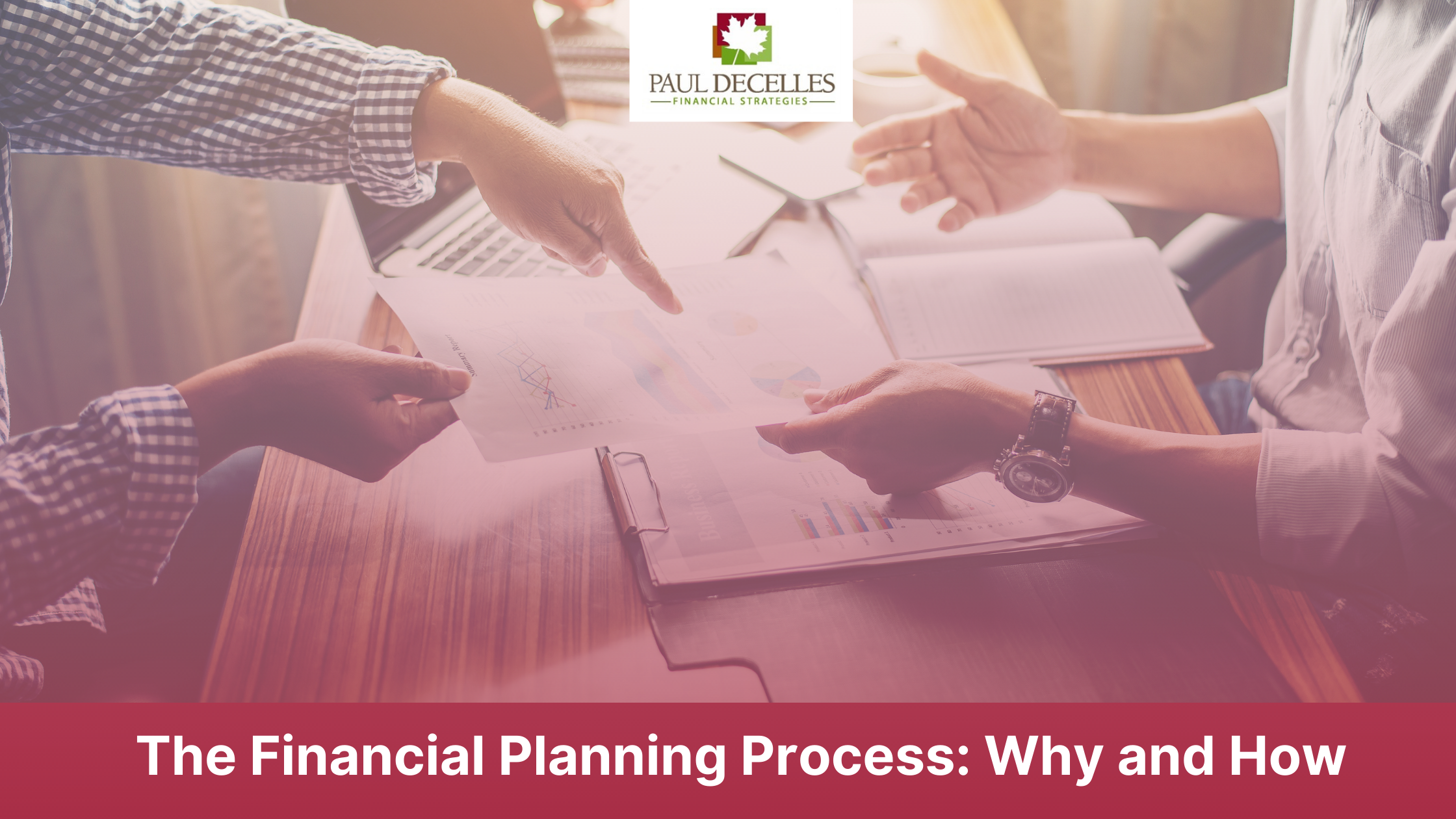The Financial Planning Process: Why and How

Planning personal finances used to be the worry of the wealthy and their worry—usually preservation of wealth—was attended to by teams of trust officers and lawyers. Many of today’s middle class families have different concerns: funding retirement; educating children; protecting assets; and coping with unexpected changes in health, employment, and marital situations. But, whether your goal is to build or protect assets, it may be better to start sooner rather than later.
Where to begin? Once you have the resolve, you may choose to work with a financial professional whose services resides in the planning process itself. Such an individual can help you focus on the big picture, and may hold licenses and credentials allowing him or her to provide specialized services or products related to accounting, taxes, insurance, investing, and so on. Rather than zeroing in on such issues, your financial professional will start where you are, guiding you through an organized and methodical process.
Step One: Building the Relationship
Financial professionals typically follow a set procedure in helping you develop a long-range financial strategy. The first step is to establish and define the relationship by delineating the responsibilities of each so that you fully understand the nature and extent of the services provided. At this point, you may discuss how the financial professional will be compensated—flat fee, a percentage of your assets, commissions paid by a third party for products included in your plan, or a combination.
Steps Two through Four: Exploring Your Financial Life
Step two may involve identifying your personal and financial goals, your time horizon for achieving them, and the level of risk you are comfortable assuming. A detailed questionnaire may be used. Step three consists of comparing your stated goals with your current financial situation—your assets, liabilities, cash flow, insurance coverage, investments, and taxes. Step four offers concrete recommendations on ways to help work towards your goals using your current resources.
Steps Five and Six: Implementing an Action Plan
Having agreed on an action plan, step five is when you and the financial professional decide who will implement the strategy. This step may involve either you or the professional engaging the services of a specialist, an insurance agent or accountant, for example. The sixth and final step is really an ongoing one: Periodically reviewing your progress toward your goals and checking that your strategy is still in synch with your objectives.
Over and above your personal situation, you should feel free to discuss with your financial professional any changes in the economy, stock market, and tax laws that you think may have an impact on your financial strategy. The more “in touch” you are with your financial professional, the more attuned your financial strategy may be with your needs and goals.
PFGFPL01-X
Important Disclosures
The opinions voiced in this material are for general information only and are not intended to provide specific advice or recommendations for any individual.
Investing involves risks including possible loss of principal. No investment strategy or risk management technique can guarantee return or eliminate risk in all market environments.
This information is not intended to be a substitute for specific individualized tax or legal advice. We suggest that you discuss your specific situation with a qualified tax or legal advisor.
This article was prepared by Liberty Publishing, Inc.
LPL Tracking #1-05175139





